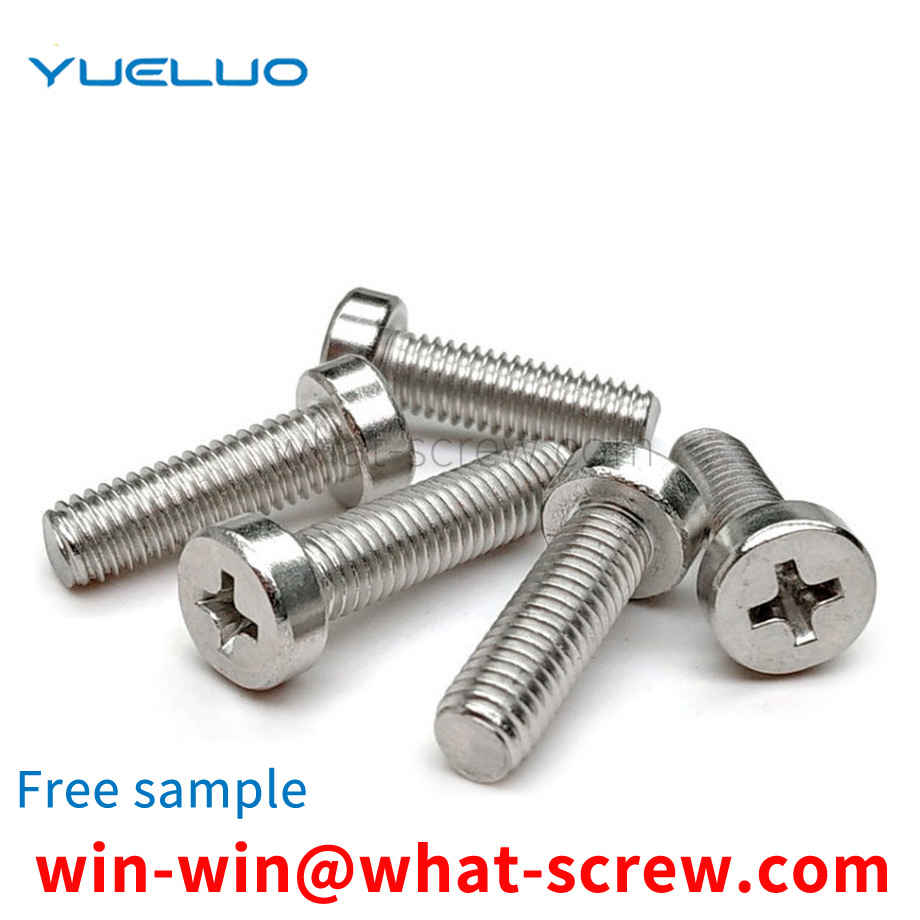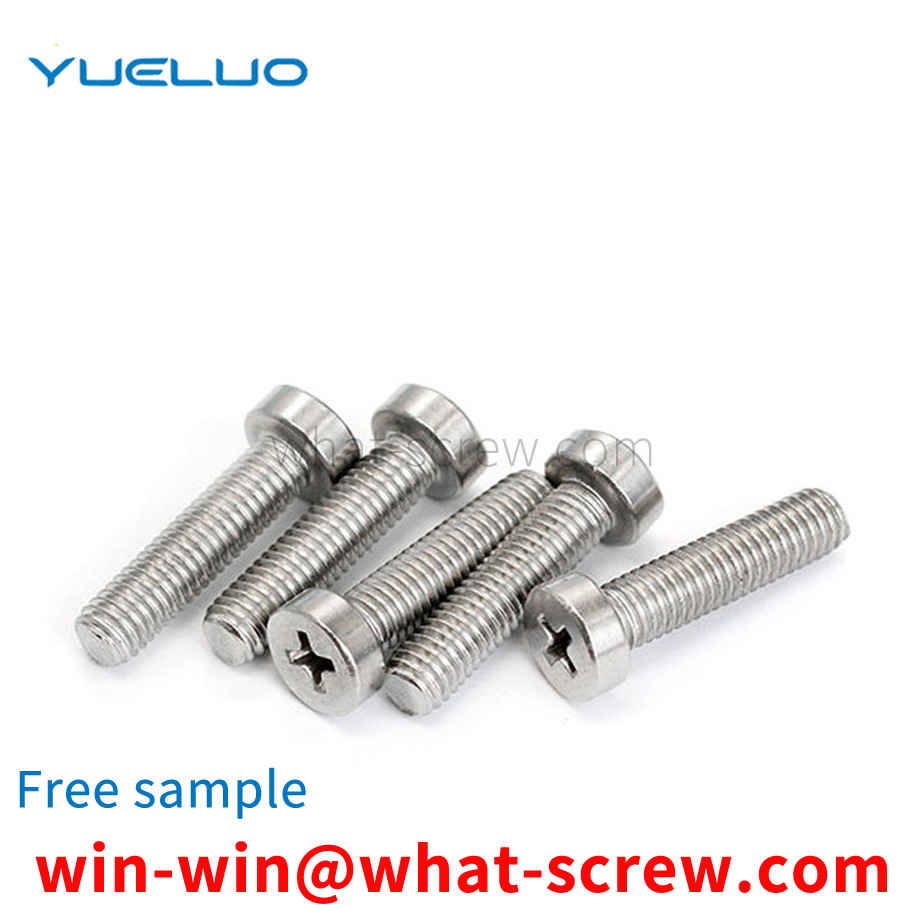There is a standard for the outer hexagon bolt standard, which is a grade standard, which is divided into grade 4.8 and grade 8.8. These two levels are used a lot in the market. Especially grade 4.8 hex head bolts. Because it is much cheaper than 8.8 hex bolts. Of course it is more widely used. But for demanding products. Because of its high requirements in various aspects such as hardness. This requires the use of 8.8 hex bolts. Grade 8.8 hex bolts are harder in terms of hardness and screw torque. It is safer to use the product. Tighter and more stable.
The elastic cylindrical pin, also known as the spring pin, is a headless hollow cylindrical body, which is slotted in the axial direction and chamfered at both ends. It is used for positioning, connection and fixation between parts. The outer diameter of the spring pin is usually slightly larger than the mounting hole. The deformation force generated by the elastic cylindrical pin to be restored to its original state by extrusion ensures the clamping effect of the elastic cylindrical pin. But just because of its clamping effect, it will play a big obstacle to the disassembly of the elastic cylindrical pin. When in use, the open end is extended out of the through hole on the pin shaft, and the open end is flared and separated to prevent the elastic cylindrical pin from sliding off the pin shaft to realize the function of preventing backlash. At present, the disassembly method of the elastic cylindrical pin usually uses a punching machine to remove the cylindrical pin, which easily destroys the equipment installed on the cylindrical pin, and the disassembled elastic cylindrical pin cannot be used again due to damage. One method is to insert the mounting pin with the clearance fit of the mandrel, punch the pin behind the mandrel to clamp the bottom of the cylindrical pin, and then pull out the cylindrical pin, which can only be used when the elastic mounting pin is installed in the through hole, and because it is necessary Applying force to the mandrel increases the difficulty of disassembly and increases the work intensity of the installer. Three methods are done by the installer using two needle nose pliers. Specifically, first use needle-nose pliers to clamp the ends of both sides of the elastic cylindrical pin, and then apply an inward force to the needle-nose pliers, so that both sides of the elastic cylindrical pin rotate in the same direction until the opening becomes smaller, and then Pull it out to remove it successfully. The defects of these existing methods are obvious. The shape of the disassembled elastic cylindrical pin is either unusable or the deformation of the cylindrical pin after disassembly is not uniform, which seriously affects the performance of the elastic cylindrical pin, resulting in waste and increased cost; The method is purely manual work, and sometimes it takes several repetitions to remove the elastic cylindrical pin. Due to the different installation positions of the elastic cylindrical pin, it sometimes increases the difficulty of disassembly, and it is difficult to remove the needle-nose pliers effectively. The pliers are difficult to construct, and the elastic cylindrical pins are easily damaged. If there are too many elastic cylindrical pins to be disassembled, the existing methods are often difficult to meet the needs, which not only consumes a lot of time and physical strength of the installer, but also makes it difficult to ensure the quality.
However, for some thin-walled parts (such as metal material parts with a thickness of less than 1mm), the combination of cylindrical pins and edge-cutting positioning pins is used as the positioning method on the workstation equipment. In the process of automatic grasping by mechanical grippers, there are many The disadvantage is that if the positioning accuracy is to be met, it is inconvenient for the parts to be placed in the station utensils, and it is also inconvenient for the mechanical gripper to grasp the parts, and it is easy to cause the phenomenon of positioning pin hook parts when grasping the parts. Abandon the positioning and matching accuracy of pins and holes, but in the process of equipment assembly, due to poor positioning accuracy, another phenomenon will occur, that is, the positioning pins on the mechanical gripper are not aligned with the positioning holes of the workstation equipment, so that the equipment Frequent errors. As shown in Figure 2, when the mechanical gripper grasps thin-walled parts with an inclined angle, if a cylindrical pin is used, there must be a large gap between the cylindrical pin head and the part positioning hole, that is, the diameter A of the part positioning hole must be larger than Only when the diameter B of the cylindrical pin head is larger, the parts can be picked and placed.
Cylindrical pins are widely used for positioning or connecting components on mechanical equipment, and the cylindrical pins are fixed in the pin holes by means of interference fit. Cylindrical pins are generally processed by a grinding machine and a punch former, but the above processing methods have complex operation procedures, high processing equipment and high processing costs.
According to the design of the screw washer 110 , when the metal piece 120 and the metal piece 130 are disassembled, after the screw 100 is loosened, the screw washer 110 is often easily dropped or lost, causing trouble for maintenance. Especially when replacing parts at the user end, if the screw washer is loose, it cannot ensure that the user can install it correctly; if the screw washer is lost, it is necessary to purchase new parts, causing a lot of inconvenience.
We have many years of experience in the production and sales of screws, nuts, flat washers, etc. The main products are: copper hexagon head screws, elastic pins, left-toothed left-handed reverse nuts, stamping nuts and other products, we can provide you with suitable products for you. fastener solutions.



















 Service Hotline
Service Hotline




